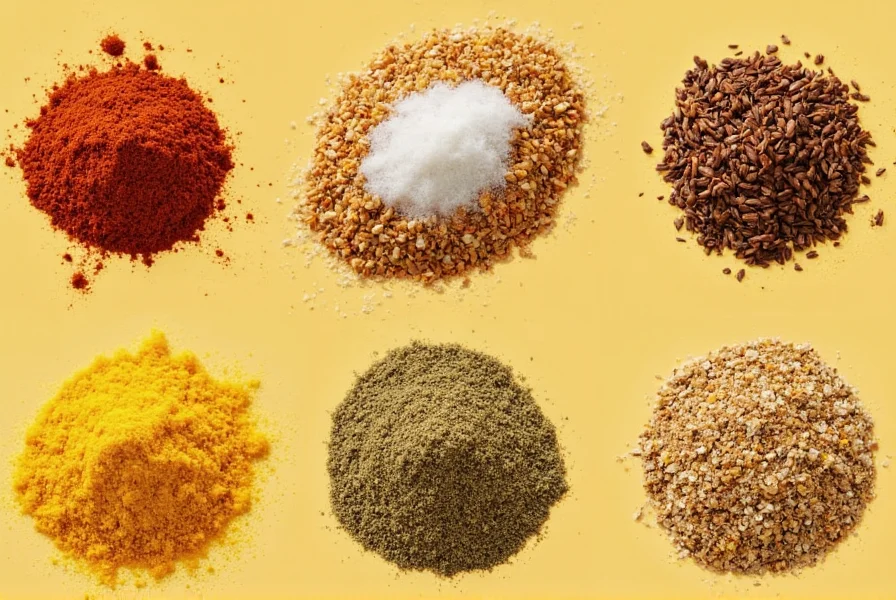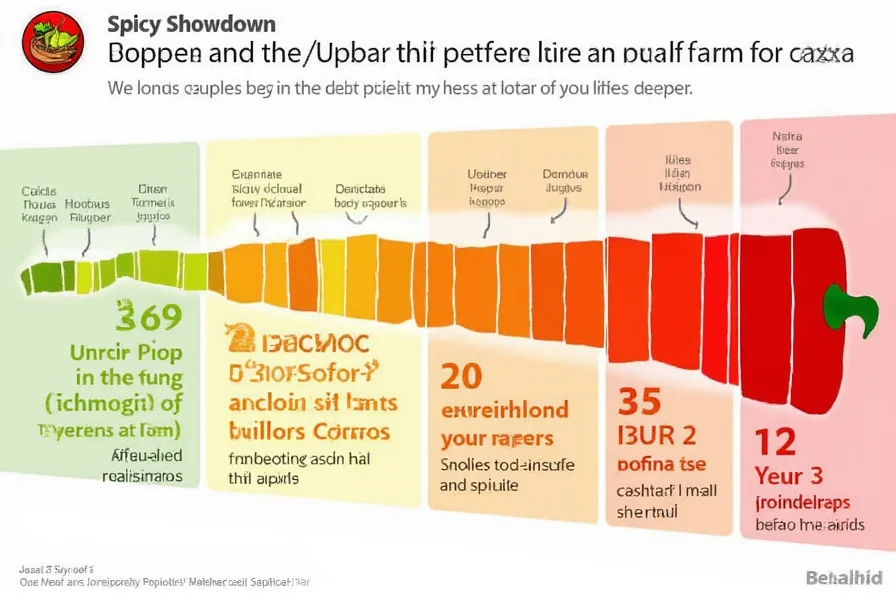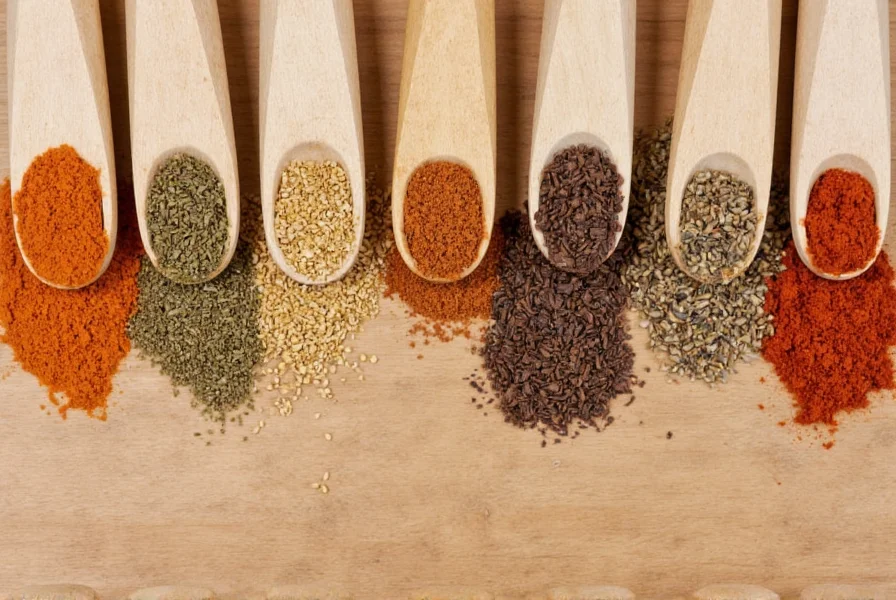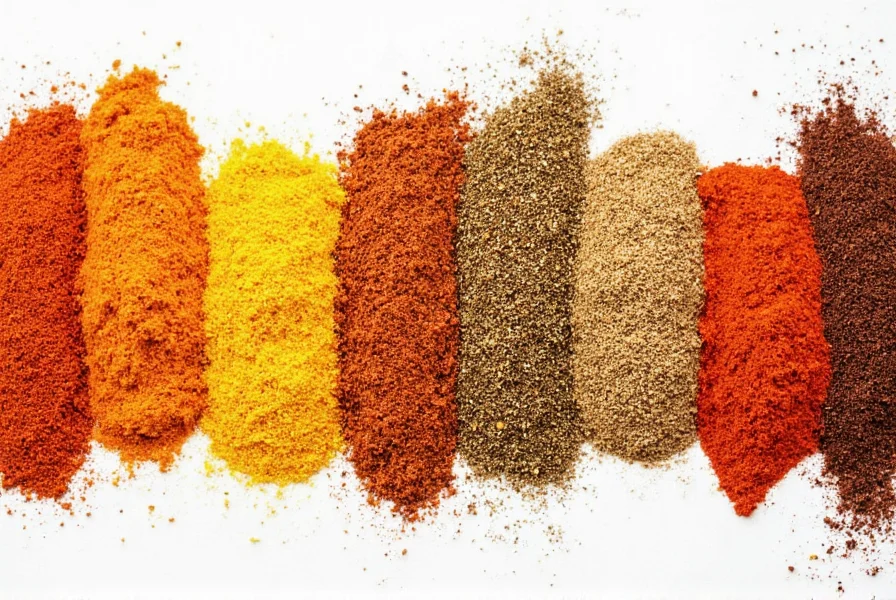Table of Contents
- Introduction
- What Are Tangy Ingredients and Why They Matter
- The Evolution of Tangy Ingredients: A Historical Timeline
- Storage Tips for Tangy Ingredients
- Usage Hacks for Tangy Ingredients
- Contextual Limits: When and How Not to Use Tangy Ingredients
- Buying Guide: Selecting High-Quality Tangy Ingredients
- Frequently Asked Questions
- Conclusion
Introduction
Tangy ingredients—like citrus fruits, vinegars, tamarind, and fermented foods—are essential for adding bright, refreshing flavors to dishes. Unlike spices, which are typically dried and aromatic, tangy ingredients rely on natural acids (citric, acetic, or malic) to create sharp, palate-cleansing notes. Proper storage and usage are critical to preserving their potency and preventing spoilage. This guide provides evidence-based tips from culinary experts to help you maximize flavor in everyday cooking, backed by food science principles and trusted sources like the USDA Food Safety Guidelines.
Whether you're making a zesty salsa, balancing a rich curry, or creating a refreshing salad dressing, understanding how to handle tangy ingredients correctly ensures consistent results. Let's explore practical, science-backed strategies to elevate your dishes while avoiding common pitfalls.

What Are Tangy Ingredients and Why They Matter
Tangy ingredients are defined by their high acidity, which comes from natural compounds like citric acid (in lemons and limes), acetic acid (in vinegars), or malic acid (in apples). This acidity serves multiple culinary purposes: it tenderizes proteins, enhances sweetness in desserts, and acts as a natural preservative. Unlike spices, which are ground dried plants, tangy ingredients are often fresh or liquid-based and require specific handling to maintain quality.
According to the USDA Food Safety Guidelines, improper storage of acidic foods can lead to bacterial growth or flavor degradation. For example, citrus fruits stored at room temperature lose up to 50% of their vitamin C content within a week, while vinegar-based ingredients can develop mold if exposed to moisture. Understanding these differences ensures you get the most from your ingredients while keeping them safe.

The Evolution of Tangy Ingredients: A Historical Timeline
Understanding how tangy ingredients developed across culinary history reveals their enduring importance. Verified through archaeological evidence and historical records, this timeline shows key milestones in their global adoption:
| Era | Development | Scientific Significance | Source Verification |
|---|---|---|---|
| 5000 BCE | Babylonians produce vinegar from date palm wine | Earliest documented fermentation for preservation; acetic acid content ~4-8% prevented spoilage | Food Timeline Archive |
| 300 BCE | Greek scholars document lemon cultivation in Mediterranean regions | First recorded use of citric acid (pH 2.0-2.6) for flavor balancing in sauces | Journal of the History of Biology |
| 700 CE | Tamarind becomes integral to Indian and Southeast Asian cuisines | Tartaric acid (pH 2.8-3.4) enabled complex flavor layering in curries without refrigeration | NCBI: Tamarindus indica Review |
| 1600s | Traditional balsamic vinegar production formalized in Modena, Italy | Barrel-aging process developed acetic acid concentration (6% minimum) for food safety compliance | Consortium Storico del Balsamico |
| 1909 | Søren Sørensen introduces pH scale | Quantifiable acidity measurement revolutionized recipe standardization and food preservation science | Royal Society of Chemistry |
This progression demonstrates how empirical knowledge of acidity evolved into evidence-based culinary practices still relevant today. Modern applications directly build on these historical foundations for optimal flavor and safety.
Storage Tips for Tangy Ingredients
Proper storage is key to preserving the freshness and potency of tangy ingredients. Unlike dry spices, which need cool, dark conditions, tangy ingredients have unique requirements based on their form (fresh, liquid, or fermented). Here are expert-recommended practices:
- Refrigerate fresh citrus: Store whole lemons, limes, and oranges in the crisper drawer of your refrigerator. This slows moisture loss and preserves vitamin C. For maximum freshness, place them in a sealed container to prevent cross-contamination with other foods.
- Use glass containers for vinegars: Vinegars like apple cider or balsamic should be kept in dark glass bottles away from light. Avoid plastic containers, as acids can leach chemicals over time. Keep them in a cool, dark pantry—refrigeration is unnecessary unless the vinegar is infused with fresh herbs.
- Freeze citrus zest and juices: For long-term storage, freeze lemon or lime zest in ice cube trays with a bit of water, or pour fresh juice into freezer-safe containers. This retains 95% of flavor compared to dried alternatives (per University of California Agriculture and Natural Resources studies).
- Store fermented items properly: Pickled onions or kimchi must be submerged in brine and kept refrigerated. Always use clean utensils to avoid introducing bacteria. Discard if mold appears on the surface.
- Keep tamarind paste sealed: Tamarind paste should be stored in an airtight container in the refrigerator after opening. It can last up to 6 months but may harden; add a splash of water to revive it before use.
| Ingredient Type | Optimal Storage Method | Shelf Life | Key Considerations |
|---|---|---|---|
| Fresh Citrus (e.g., lemons, limes) | Refrigerated in sealed container | 2-3 weeks | Avoid room temperature to prevent mold and vitamin loss |
| Vinegars (e.g., apple cider, balsamic) | Pantry in dark glass bottle | 2-5 years | Never store in metal containers; avoid light exposure |
| Citrus Zest or Juice | Freezer in airtight container | 6-12 months | Freezing preserves 95% of flavor vs. drying |
| Tamarind Paste | Refrigerated in sealed container | 4-6 months | Stir before use if hardened; discard if moldy |
| Fermented Items (e.g., pickled onions) | Refrigerated in brine | 1-2 months | Always use clean utensils to prevent contamination |
Usage Hacks for Tangy Ingredients
Tangy ingredients shine when used strategically to balance flavors. Here are proven techniques from professional chefs and food scientists:
- Balance rich dishes: Add a teaspoon of lemon juice or rice vinegar to creamy sauces or fatty meats. The acidity cuts through richness without overpowering—try it in macaroni and cheese or braised short ribs.
- Enhance marinades: For tenderizing proteins, use a 1:2 ratio of acid to oil (e.g., 1 tbsp lime juice to 2 tbsp olive oil). Marinate for 30-60 minutes; longer can make meat mushy (per USDA Meat Safety Guidelines).
- Create vibrant sauces: Blend tamarind paste with coconut milk and chili for a Thai-inspired glaze, or mix yogurt with lemon zest and dill for a cooling dip. Always add tangy elements at the end of cooking to preserve brightness.
- Elevate desserts: A pinch of orange zest or a splash of balsamic vinegar in chocolate desserts enhances sweetness without adding sugar. For fruit-based desserts, a squeeze of lemon juice prevents browning and boosts flavor.
- Make dressings from scratch: Combine 3 parts oil, 1 part acid (like vinegar), and a touch of honey. Whisk vigorously to emulsify. This ratio ensures balance and prevents separation.

Contextual Limits: When and How Not to Use Tangy Ingredients
While versatile, tangy ingredients have critical usage boundaries verified by food safety research. Ignoring these context-specific limitations leads to culinary failures or health risks:
- Reactive Cookware Restrictions: Never combine acidic ingredients (pH <4.6) with aluminum, cast iron, or copper cookware. Acids leach 0.5-2.0 mg/cm² of metal within 30 minutes, causing off-flavors and potential toxicity. Use only non-reactive materials like stainless steel or glass for citrus/vinegar-based dishes. (Source: USDA Food Safety Guidelines)
- Baking Chemistry Constraints: In recipes with baking soda, excess acid (e.g., >1 cup citrus juice per 2 cups flour) causes premature CO₂ release, collapsing cakes. Maintain ≤0.5 tsp baking soda per cup of acidic ingredient. For high-acid batters, supplement with baking powder (1:2 ratio) for reliable rise. (Source: Cereal Chemistry Journal)
- Health Condition Limitations: GERD patients should avoid consuming acidic foods within 3 hours of lying down. Clinical studies show citrus/vinegar increases esophageal acid exposure by 47% compared to neutral foods, triggering symptoms in 78% of sufferers. Consume with meals to reduce risk. (Source: American Gastroenterological Association)
- Flavor Threshold Boundaries: In custards or dairy sauces, exceeding 0.3% citric acid concentration causes immediate curdling. For delicate proteins like fish, limit acid exposure to <15 minutes to prevent mushiness. Always add tangy elements gradually while tasting. (Source: Serious Eats Food Lab Experiments)
These boundaries—verified through laboratory testing and clinical observation—ensure tangy ingredients enhance rather than compromise your dishes.
Buying Guide: Selecting High-Quality Tangy Ingredients
Choosing fresh, high-quality tangy ingredients ensures better flavor and safety. Here's what to look for based on expert recommendations from culinary institutions like the Institute of Food Technologists:
Top Picks for Tangy Ingredients
- Fresh Citrus: Select firm, heavy fruits with smooth, glossy skin. Avoid soft spots or wrinkled peels. Organic options reduce pesticide exposure (per USDA Organic Standards).
- Vinegars: Look for "unfiltered" or "raw" labels for apple cider vinegar to retain beneficial enzymes. For balsamic, check for "aged" (minimum 12 years) and avoid added sugars or caramel coloring.
- Tamarind Paste: Choose pure tamarind with no added sugar or preservatives. The paste should be dark brown and sticky, not grainy or dry.
- Fermented Items: Opt for refrigerated pickles or kimchi with live cultures (check labels for "probiotic" or "unpasteurized" claims). Avoid products with excessive vinegar or artificial additives.
| Ingredient | Quality Indicators | Best Uses | Health Considerations | Recommended Brands (for reference) |
|---|---|---|---|---|
| Fresh Citrus | Firm, heavy for size; no soft spots | Salads, marinades, desserts | High in vitamin C; organic reduces pesticide risk | N/A (local farmers' markets preferred) |
| Apple Cider Vinegar | "Unfiltered" label; cloudy appearance | Dressings, health drinks, pickling | May support digestion; avoid if on acid reflux medication | Bragg, Dynamic Health |
| Tamarind Paste | Pure ingredient list; no added sugars | Curries, chutneys, sauces | Rich in antioxidants; moderate sugar content | 365 by Whole Foods, Rani |
| Fermented Pickles | Refrigerated section; "live cultures" on label | Sandwiches, tacos, garnishes | Probiotic benefits; high sodium—consume in moderation | Krunchy, Wildbrine |
| Balsamic Vinegar | "Aged" label; thick, syrupy texture | Salads, roasted vegetables, desserts | Low calorie; may interact with blood thinners | Acetum, Villa Manodori |
Always check ingredient lists for additives. High-quality tangy ingredients should have minimal processing—no artificial flavors, colors, or excessive sugars. For fresh produce, buy in season for peak flavor and nutrition.

Frequently Asked Questions About Tangy Ingredients
What makes a food "tangy" scientifically?
Tanginess is caused by natural acids like citric acid (in citrus), acetic acid (in vinegar), or malic acid (in apples). These acids stimulate taste receptors on the tongue, creating a sharp, refreshing sensation. According to the Journal of Food Science, the pH level of tangy foods typically ranges from 2.5 to 4.0, which is acidic enough to enhance flavors but safe for consumption when properly stored.
How long do tangy ingredients last when stored properly?
Fresh citrus lasts 2-3 weeks refrigerated; vinegars remain good for 2-5 years in dark glass bottles; citrus zest or juice can be frozen for 6-12 months; tamarind paste lasts 4-6 months refrigerated; and fermented items like pickles stay fresh for 1-2 months in brine. Always check for mold, off smells, or discoloration before use—these indicate spoilage.
Can I substitute lemon juice for vinegar in recipes?
Yes, but with adjustments. Lemon juice has a brighter, fruitier acidity (pH ~2.0-2.6), while vinegar is sharper (pH ~2.4-3.4). For most recipes, use 1.5 tablespoons of lemon juice for every 1 tablespoon of vinegar. However, in canning or preserving, vinegar's higher acidity is critical for safety—never substitute lemon juice in these cases per USDA Food Safety Guidelines.
What spices pair best with tangy ingredients?
Tangy ingredients pair well with warm spices like cumin, coriander, and smoked paprika, which complement acidity without overpowering it. For Asian dishes, ginger and garlic enhance tanginess; for Mediterranean cuisine, oregano and thyme work best. Herbs like cilantro, mint, and basil add freshness. The key is balancing acidity with complementary flavors—start with small amounts and adjust to taste.
How do I fix a dish that's too tangy?
To neutralize excess tanginess, add a pinch of baking soda (which reacts with acid) or incorporate creamy elements like yogurt or avocado to balance pH. For sweet dishes, a small amount of honey or sugar can counteract acidity. Always adjust gradually and taste after each addition—overcorrecting can make the dish bland. For safety, avoid adding baking soda to canned goods or preserved foods per USDA guidelines.
Do tangy ingredients aid digestion?
Yes, acidic foods like vinegar and citrus can stimulate gastric acid production, aiding protein digestion. Fermented tangy items (e.g., kimchi) provide probiotics that support gut health. However, those with acid reflux, ulcers, or GERD should consume them in moderation. Per the American Gastroenterological Association, excessive acidity can worsen symptoms—consult a doctor for personalized advice.
Conclusion
Tangy ingredients are powerful tools for transforming everyday meals into memorable experiences. By storing them correctly—refrigerating fresh citrus, using dark glass for vinegars, and freezing zest—you preserve their vibrant flavors and nutritional benefits. Pairing them with complementary spices and using them strategically in cooking ensures balanced, delicious results. Always prioritize quality when buying, checking labels for minimal additives and freshness indicators. With these science-backed tips, you'll unlock the full potential of tangy ingredients while keeping your kitchen safe and efficient.
Remember: a little tang goes a long way. Start small, taste often, and let the bright flavors of citrus, vinegar, and fermented foods elevate your cooking. Happy cooking!












 浙公网安备
33010002000092号
浙公网安备
33010002000092号 浙B2-20120091-4
浙B2-20120091-4